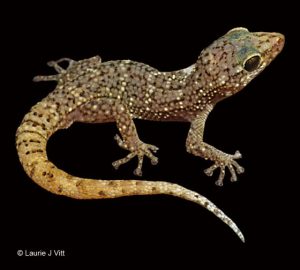
LIPPI – Disentangling the Influence of Urbanization and Invasion on Endemic Geckos in Tropical Biodiversity Hot Spots: A Case Study of Phyllodactylus martini (Squamata: Phyllodactylidae) along an Urban Gradient in Curaçao
Alex Dornburg, Cat Lippi, Sarah Federman, Jon A. Moore, Dan L. Warren, Teresa L. Iglesias, Matthew C. Brandley, Gregory J. Watkins-Colwell, April D. Lamb and Andrew Jones
Article first published online: OCT 2016 Bulletin of the Peabody Museum of Natural History
DOI: 10.3374/014.057.0209
ABSTRACT:
Predicting the response of endemic species to urbanization has emerged as a fundamental challenge in 21st century conservation biology. The factors that underlie population declines of reptiles are particularly nebulous, as these are often the least understood class of vertebrates in a given community. In this study, we assess correlations between feeding ecology and phenotypic traits of the Lesser Antillean endemic Dutch leaf-toed gecko, Phyllodactylus martini, along an urban gradient in the Caribbean island of Curaçao. There has been a marked decline of this species in developed habitats associated with the invasive tropical house gecko Hemidactylus mabouia. We find a correlation between aspects of locomotor morphology and prey in undeveloped habitats that is absent in developed habitats. Analyses of stomach contents further suggest that Phyllodactylus martini alters primary prey items in developed areas. However, changes in prey promote the overlap in foraging niches between Phyllodactylus martini and Hemidactylus mabouia, suggesting that direct resource competition is contributing to the decline of Phyllodactylus martini. In addition to competitive exclusion, we suggest that the urban extirpation of Phyllodactylus martini could also be attributed to a top-down control on population growth by Hemidactylus mabouia. Colonizations of walls put Phyllodactylus martini in direct contact with Hemidactylus mabouia increasing the chances for predation events, as evidenced by our observation of a predation event on a Phyllodactylus martini juvenile by an adult Hemidactylus mabuoia. In total, our results add to a growing body of literature demonstrating the threat that invasive synanthropic reptiles pose to endemics that might otherwise be able to cope with increased urbanization pressures.
Read the full publication at Bulletin of the Peabody Museum of Natural History